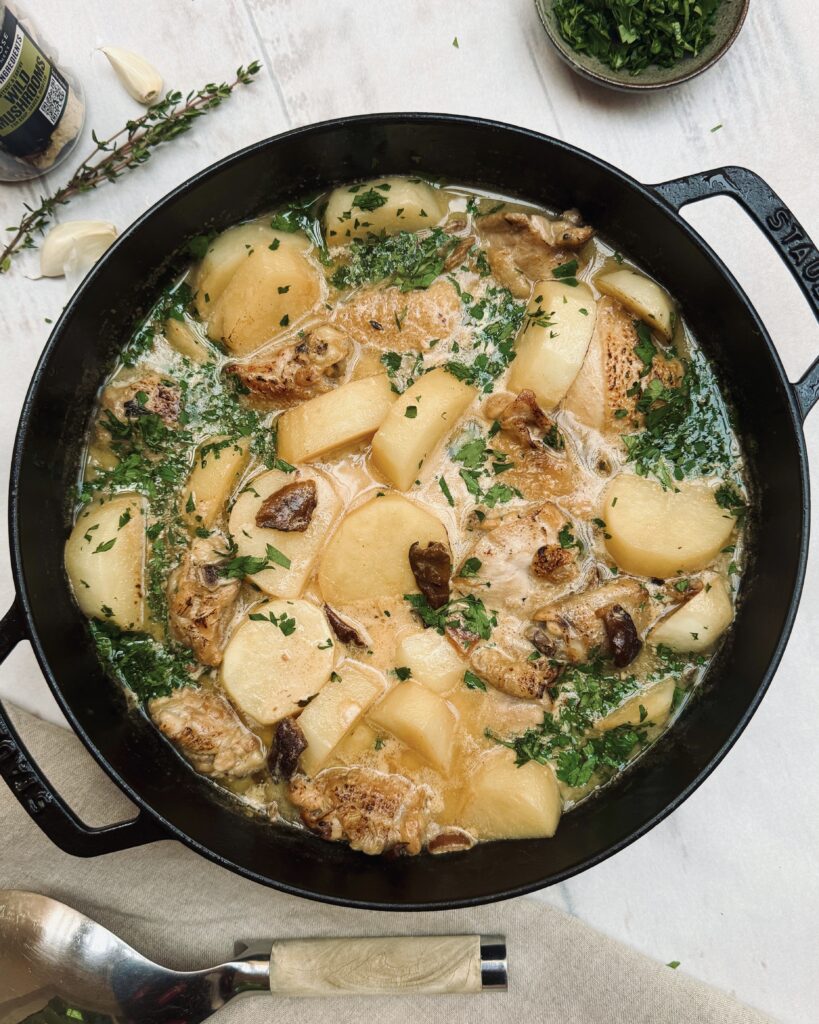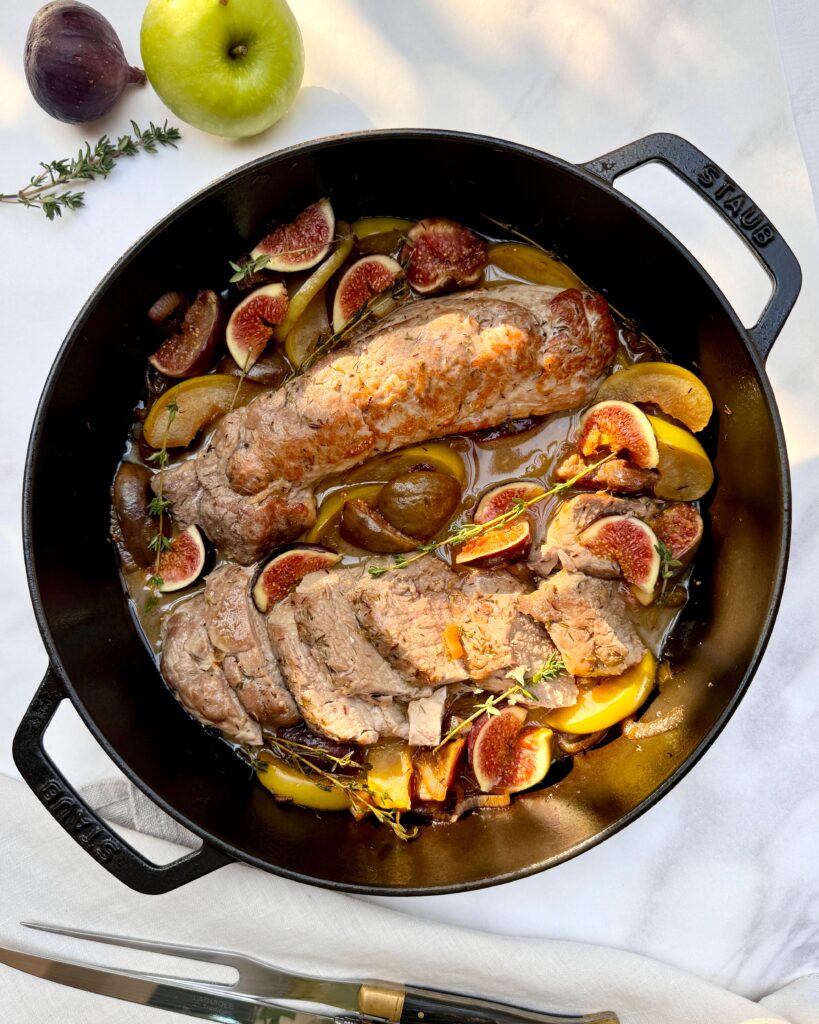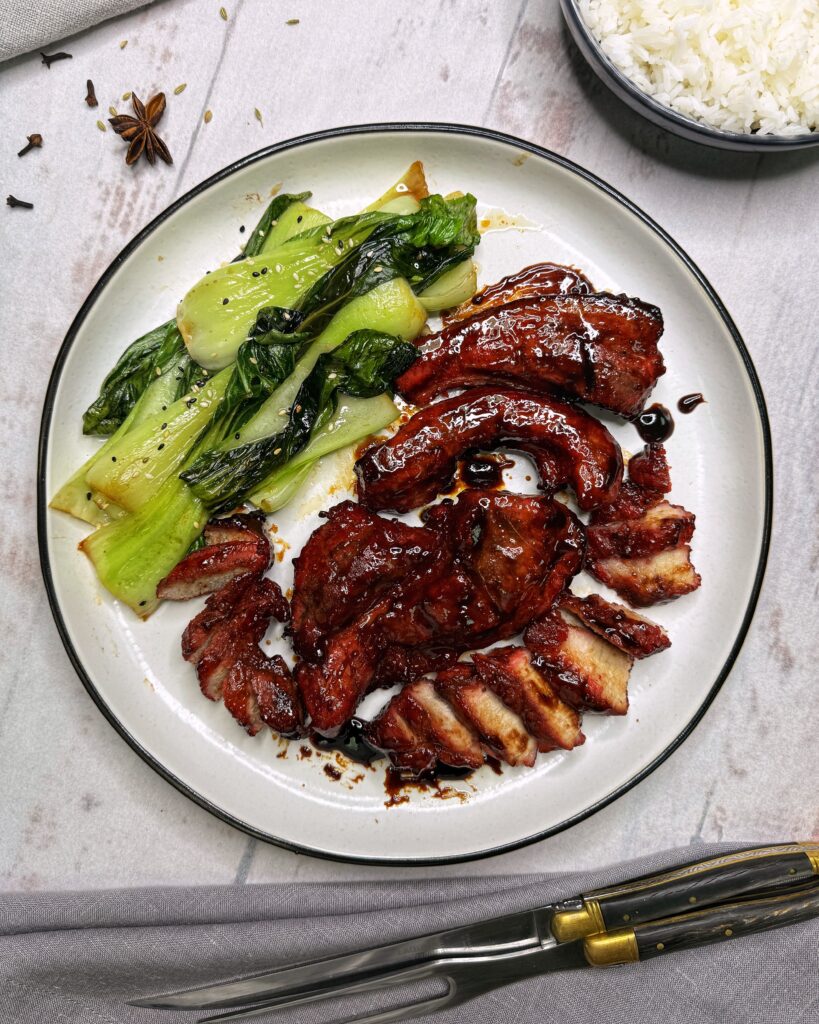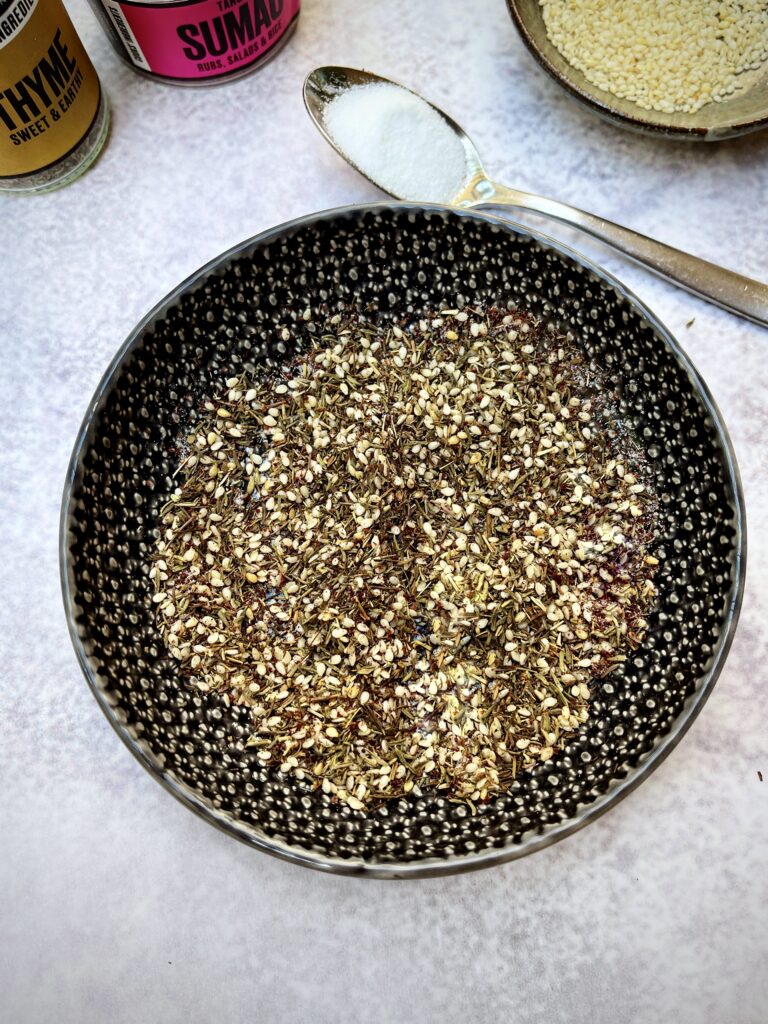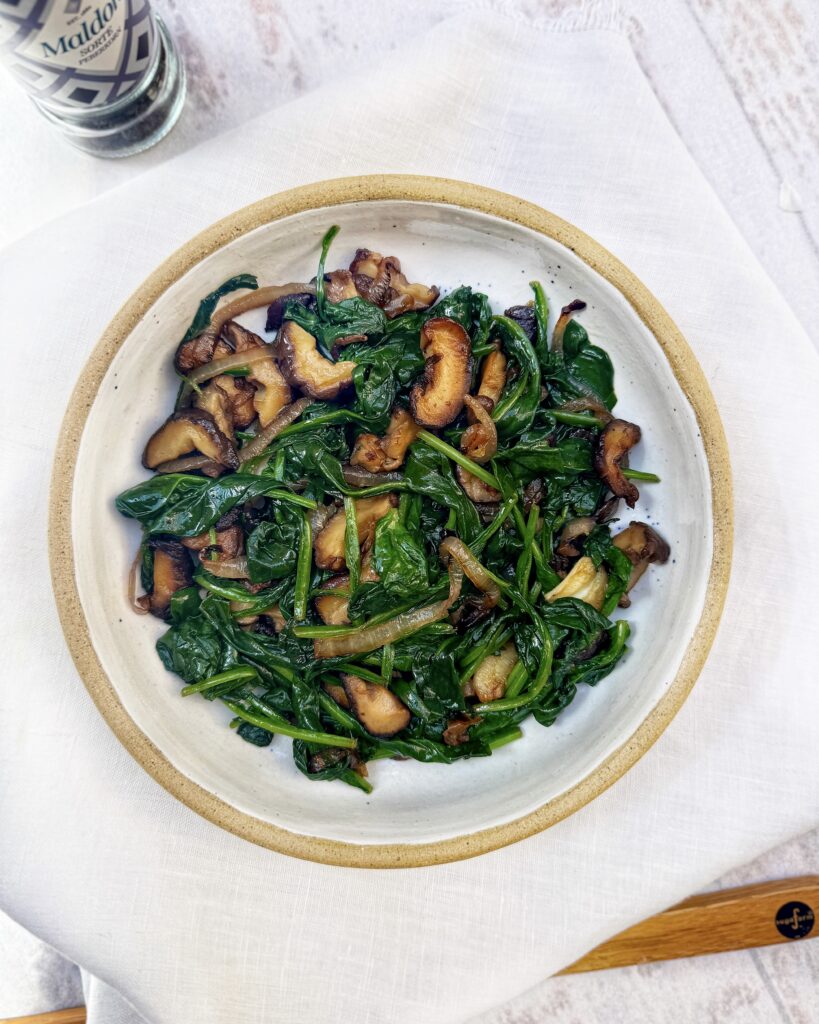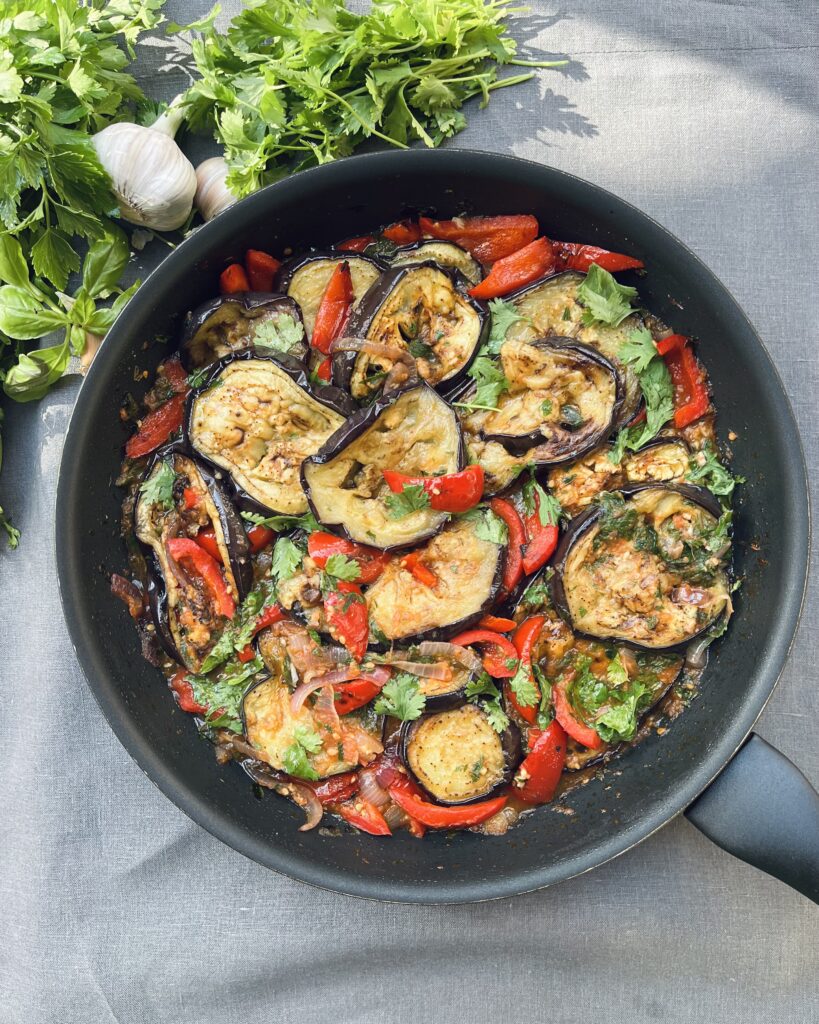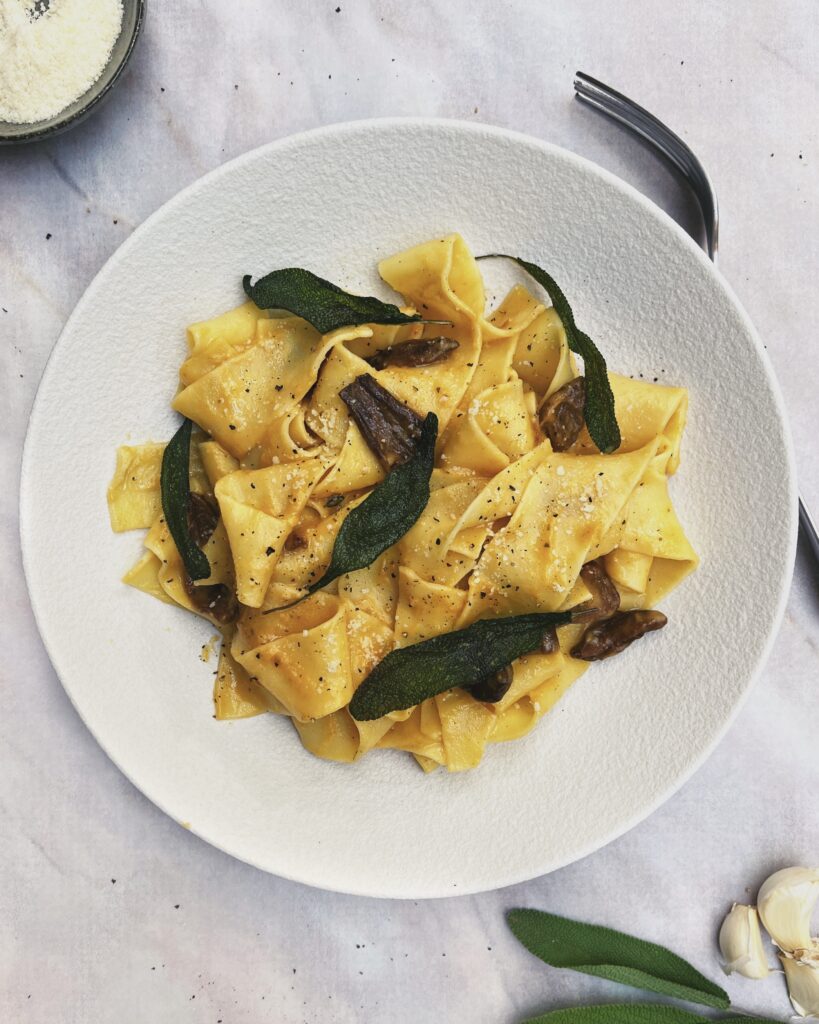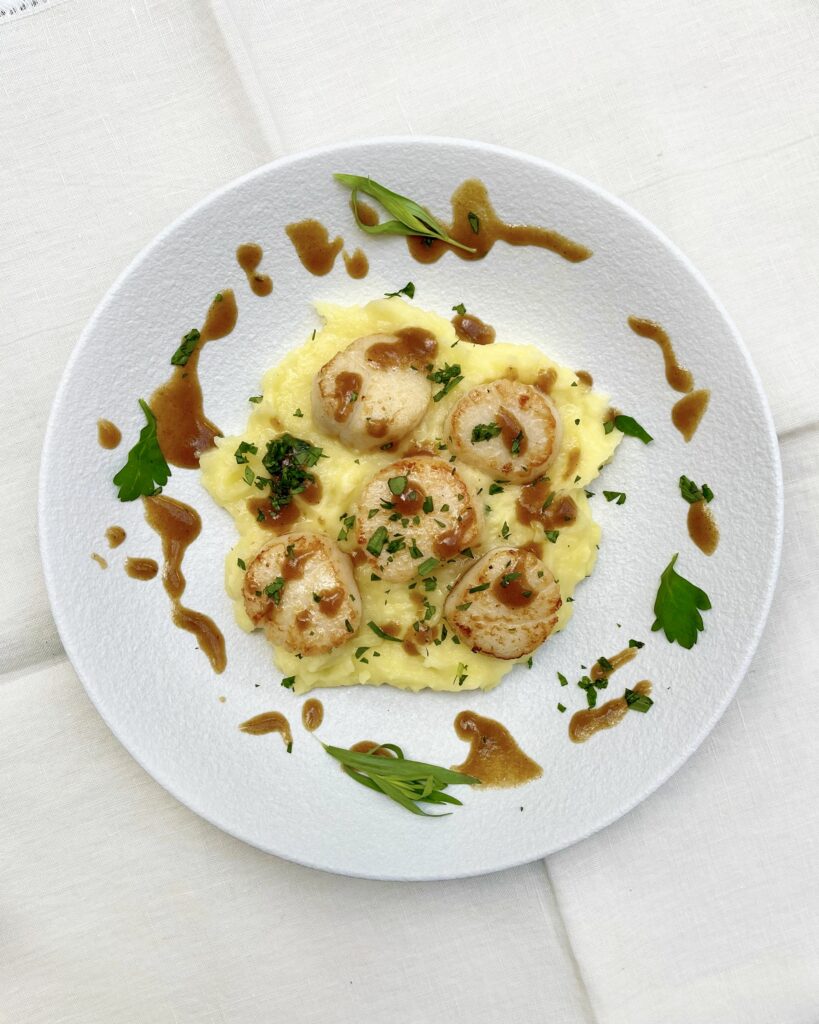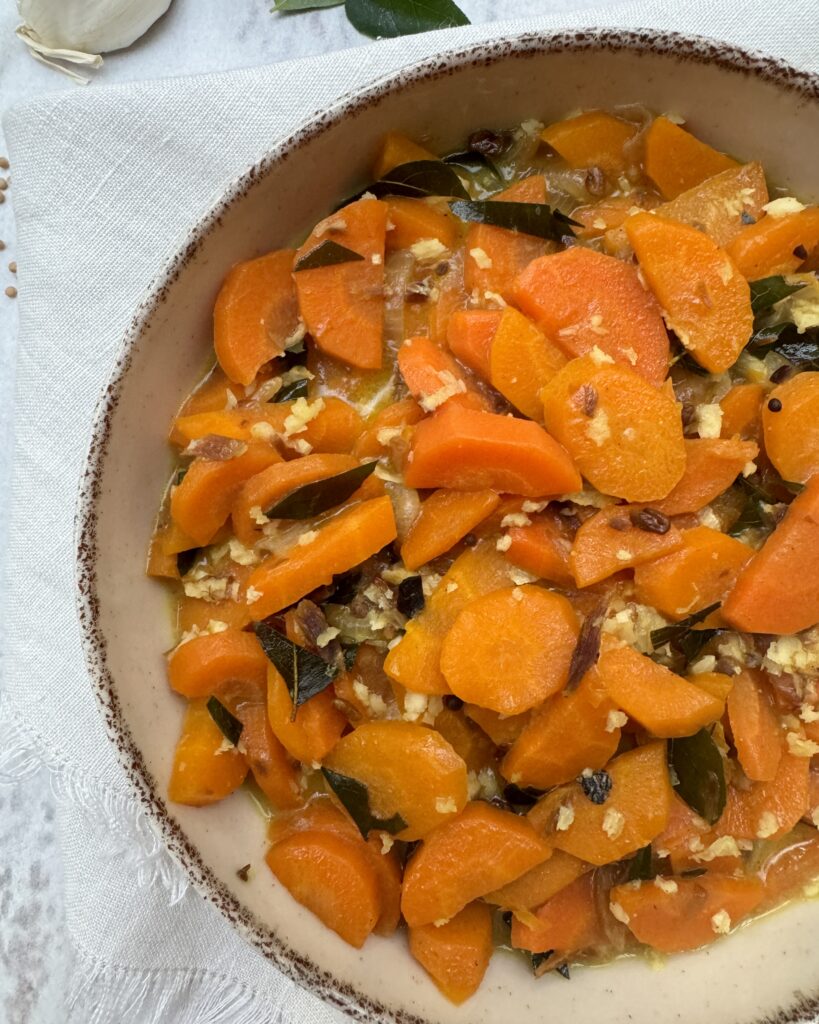
Carrot curry is a delicious and healthy dish popular in South Indian Ocean cuisine. The ingredients vary slightly from one region to another, and this authentic recipe is from Sri Lanka. Sweet carrots are gently simmered in coconut milk with a selection of spices and aromatics until just tender. In the end, the curry rests for 5-10 minutes for the gravy to thicken and absorb all the delicious flavours. The taste is mild, delicate, very balanced between savory and sweet and with just the right amount of heat. I thought I’d never warm up to cooked carrots but this recipe totally converted me!
Overview of the Ingredients:
Typically, this kind of carrot curry contains onions, garlic, curry leaves, mustard seeds, turmeric and chilies. The Sri Lankan version also includes a few extras – fenugreek seeds, ground cardamom and, most curiously, Maldivian fish chips:

Not shown: whole green chili
Onions, garlic and curry leaves create an aromatic, savory base. While the first two ingredients don’t need an introduction, curry leaves are a bit more exotic. These glossy, meaty leaves grow on curry trees (surprise!) and have nothing to do with curry powder. They boast a very unique aroma that is a mix of fresh citrusy and earthy, herbaceous, almost musky notes.
Mustard seeds are pungent and contain sulfurous components similar to garlic and curry leaves, which means the three work really well together. During cooking, those components develop into a flavour that is often referred to as ‘meaty‘ – deep, comforting and savory.
Fenugreek seeds have a bittersweet taste that pairs greatly with sweet vegetables such as carrots, pumpkin or beetroot. Soaking transforms the seeds’ firm texture into gelatinous, which helps thicken the gravy.
Turmeric powder is bitter, woody, musky. Use it sparingly because its strong taste can be quite overpowering.
Ground cardamom blends in very well here. It complements the sweet side of the curry and balances the earthy bitterness of fenugreek and turmeric with fresh floral notes.
Sri Lankans love green chilies and use them quite liberally, so I always cut the quantities by half, at least. To me, one whole chili does the job just fine!
Maldivian dried fish is probably the most peculiar ingredient here. I had never heard of it until we hired a helper from Sri Lanka who was an amazing cook and introduced me to many foods I regularly use today. She would always add a pinch of dry fish chips, as they are also called, to her vegetable curries. Similar to shrimp paste, the purpose is to enhance curries with deep flavours of umami.
Lastly, sweet and mellow coconut milk ties it all together. I normally use whatever I have at home – a can or a carton.
Preparation tips for Carrot Curry with Coconut Milk:
- Prep all the ingredients: cut the carrots, slice onion, garlic and curry leaves and measure the spices. Line everything up according to the cooking turn. Whole spices and aromatics can burn easily, so you need to keep an eye on the pan and move fast.
- Have an oil splatter shield at hand. Mustard seeds start popping when heated, and even a few seconds of hesitation may result in them flying all over. It’s therefore safer (and cleaner) to place a shield over the pot during the tempering.
- To complement the flavour profile of the dish, I like to temper the aromatics in coconut oil.
- For a more prominent coconut-y taste, you may choose to add a couple of spoons of shaved coconut in the end.
- Be careful to not overcook the carrots. Turn the heat off when they’ve just softened. The curry needs 5-10 minutes to settle during which the residual heat will cook the carrots a little more.
- If you prefer to keep it vegetarian, skip the fish chips.
Serving suggestions:
I absolutely love carrot curry on its own. Having two teens means most of our meals are quite substantial, which I don’t always prefer. When I want to have something lighter, I often turn to vegetable curries – quick to make and full of flavour, they never disappoint!
That said, you can easily serve this curry over white rice, with a paratha, or as a side dish to meats or fish. It goes particularly well with baked salmon or cod.
I hope you give it a go and grow to appreciate the beautiful flavours of Sri Lankan cuisine as much as I do!
***
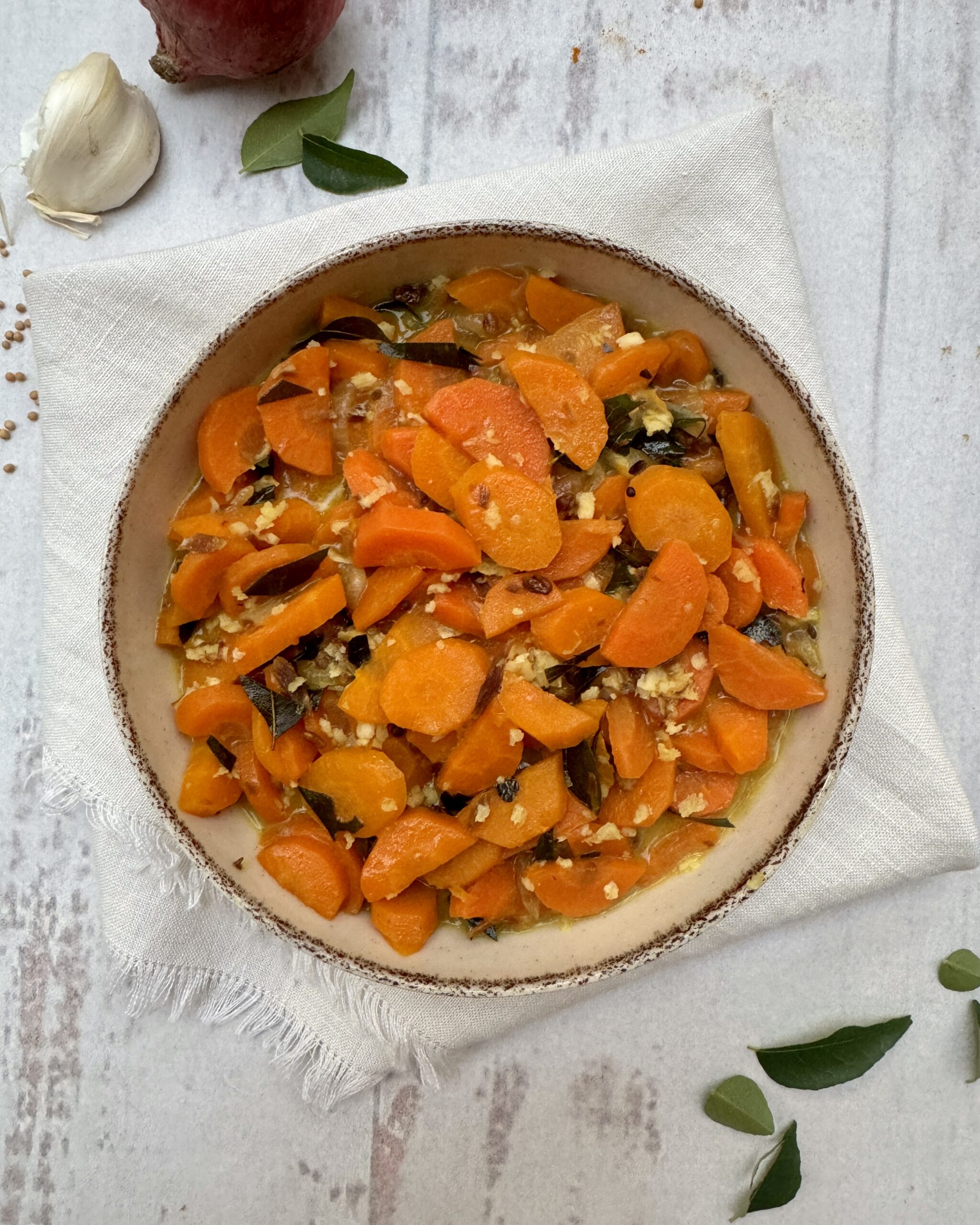
Carrot Curry with Coconut Milk
Equipment
- 1 medium sauce pan
Ingredients
- 300 g carrots halved lengthwise and sliced
- 2 tbsp coconut oil
- 1 small red onion thinly sliced
- 3 garlic cloves thinly sliced
- 20-25 curry leaves thinly sliced
- 1 small green chili whole
- 1 flat tsp yellow mustard seeds
- 1 flat tsp fenugreek seeds
- 1/2 tsp ground cardamom
- 1/2 tsp salt
- 1/3 tsp turmeric powder
- 270 ml coconut milk
- 2 tsp Maldivian dried fish optional
Instructions
- In a medium sauce pan, heat 2 tbsp of coconut oil to medium.
- Add mustard and fenugreek seeds and temper for 20-40 seconds until mustard seeds just start to pop.
- Add sliced onions, garlic and curry leaves and fry for a minute, until the aroma develops but before garlic starts to brown.
- Add the carrots and stir to combine.
- Stir in the ground spices: cardamom, turmeric and salt.
- Pour in the coconut milk, add the fish chips (if using) and pop in the green chili.
- Lower the heat, cover and simmer for 7-10 minutes until the carrots have softened but are still holding the shape well.
- Remove the lid and simmer for another 3-4 minutes.
- Turn the heat off and allow to rest for 5-10 minutes for the gravy to thicken.
- Serve warm or at room temperature.
Notes
- Carrot curry can be enjoyed on its own, over rice or as a side to meats or fish.
- Can be kept in the fridge for up to two days.


